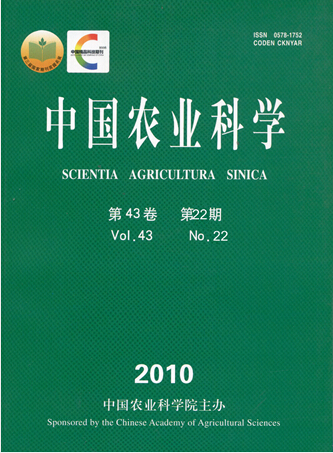【Objective】 The objective of this study was to identify the differences in accumulation and distribution and use efficiency of nitrogen and sulfur in different types of wheat. 【Method】 A three-year field trial was conducted from 2006 to 2009 with total 13 cultivars for type classification in nitrogen use efficiency (NUE) and sulfur use efficiency (SUE) based on cluster analysis. Under the filed condition with 92.2 mg?kg-1 hydrolyzable N and 42.4 mg?kg-1 available S in 0-20cm soil layer, two N treatments (N24=24 kg N?hm-2, N240=240 kg N?hm-2) and two S treatments (S0=0 kg S?hm-2, N60=60 kg S?hm-2) were made. The contents of N and S, the accumulation amount of N and S, N harvest index and S harvest index, yield, and their relationship with NUE and SUE were analyzed. 【Result】 The results showed that NUE correlated positively with SUE. Based on the cluster analysis of NUE and SUE, these 13 cultivars could be divided into three groups: high NUE and SUE group (HNS group), medium NUE and SUE group (MNS group), and low NUE and SUE group (LNS group). The contents of N and S in LNS group were higher than those in MNS group and HNS group, N harvest index and S harvest index in LNS group were lower than those in MNS group and HNS group. With sulfur applied at N24 rate, N content, N accumulation amount, S accumulation amount and yield in HNS group and MNS group increased significantly, yield in LNS group decreased significantly, and the increasing rate of N accumulation amount in LNS group was lower than that in HNS group and MNS group, the decreasing rate of N harvest index in LNS group was higher than that in HNS group and MNS group. With sulfur applied at N240 rate, the contents of N and S, the accumulation amount of N and S increased significantly, NUE and SUE decreased significantly, but no significant difference occurred in N harvest index, S harvest index and yield in HNS group; no significant difference occurred in the accumulation amount of N and S of all tested cultivars, also in N harvest index and S harvest index of most tested cultivars, but the yield, NUE and SUE decreased in MNS group and LNS group. 【Conclusion】 The relative amount of sulfur demanded for yield formation is consistent with that of nitrogen. NUE and SUE could be coordinately developed. It is an important way for utilizing N and S more efficiently to produce higher grain yield with suitable N content and S content, certain N accumulation amount and S accumulation amount, higher N harvest index and S harvest index.









